|
|
Soil Genesis and Development, Lesson 6 - Global Soil Resources and Distribution 6.5 - Major BiomesBiome is a term used to classify the Earth’s major ecosystems. A biome is defined primarily by the climate and predominant vegetation of a region. The flora and fauna occurring within a specific Biome reflects the adaptations of those organisms to that particular environment. The Major World Biomes map shown here is based upon the underlying properties of soil moisture and temperature regimes - which are largely determined by latitude, climate, topography, and upon the native vegetation that is adapted to these local conditions. The nature and extent of soil formation and development is closely associated with these local and regional conditions. Inferences about the active soil forming processes (Lesson 4.2) and/or the type and extent of rock and mineral weathering occurring (Lesson 2.1) at a particular location may be drawn from the knowledge of what biome that location is in. The influence of native vegetation on the amount, type, and distribution of organic materials within the soil, and of the organisms living in the soil may also be drawn from the Biome classification.
Basic Characteristics of World Biomes
- Tundra – Cold soil temperatures, with permafrost. Occurs at high latitudes (>60 degrees) and altitudes (alpine).
- Boreal – a climate of short summers and harsh winters. Mainly coniferous vegetation.
- Temperate – mid-latitude zones ranging from ~ 40 to 65 degrees,deciduous forest vegetation where precitpitation is sufficient (>750 mm).
- Mediterranean – occur in latitudes from 30 to 45 degress. Mild, wet winters, warm-hot dry summers.
- Desert – arid climate with low precipitation (< 250 mm/year) and high evaporation.
- Tropical – refers to latitudes from ~ 5 to 35 degrees. Warm temperatures year-round, with distinct wet and dry seasons (e.g. Monsoons).
- Humid – a climate where average annual precipitation exceeds the amount of evaporation.
- Semi-Arid – Average precipitation of 250 to 500 mm annually.
- Permafrost – a layer of soil that remains frozen year-round.
| Major World Biomes |
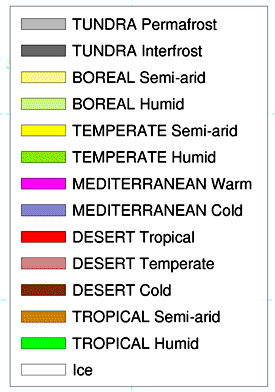 |
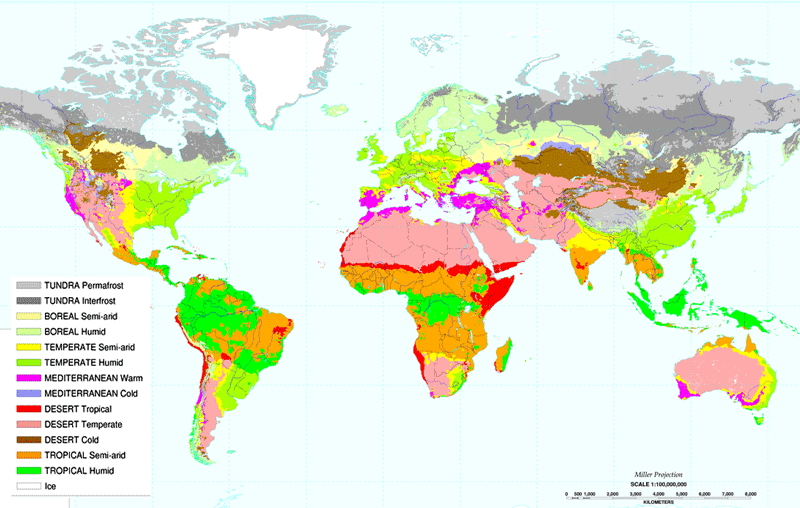 |
|
(Images courtesy of the USDA-NRCS, edited by UNL)
|
| Global Biomes of Major Continental Areas. |

Map Legend
|
|
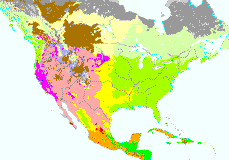
|
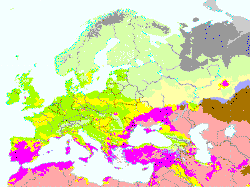
|
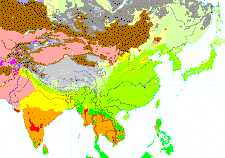
|
|
North America
|
Europe/West Asia
|
East Asia/Japan
|
|
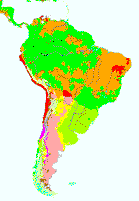
|
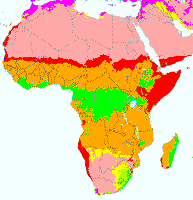
|
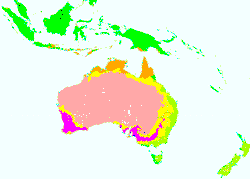
|
|
South America
|
Africa/Middle-East
|
Australia/Indonesia
|
|
|
(Images courtesy of the USDA-NRCS, edited by UNL)
|
|
Comments